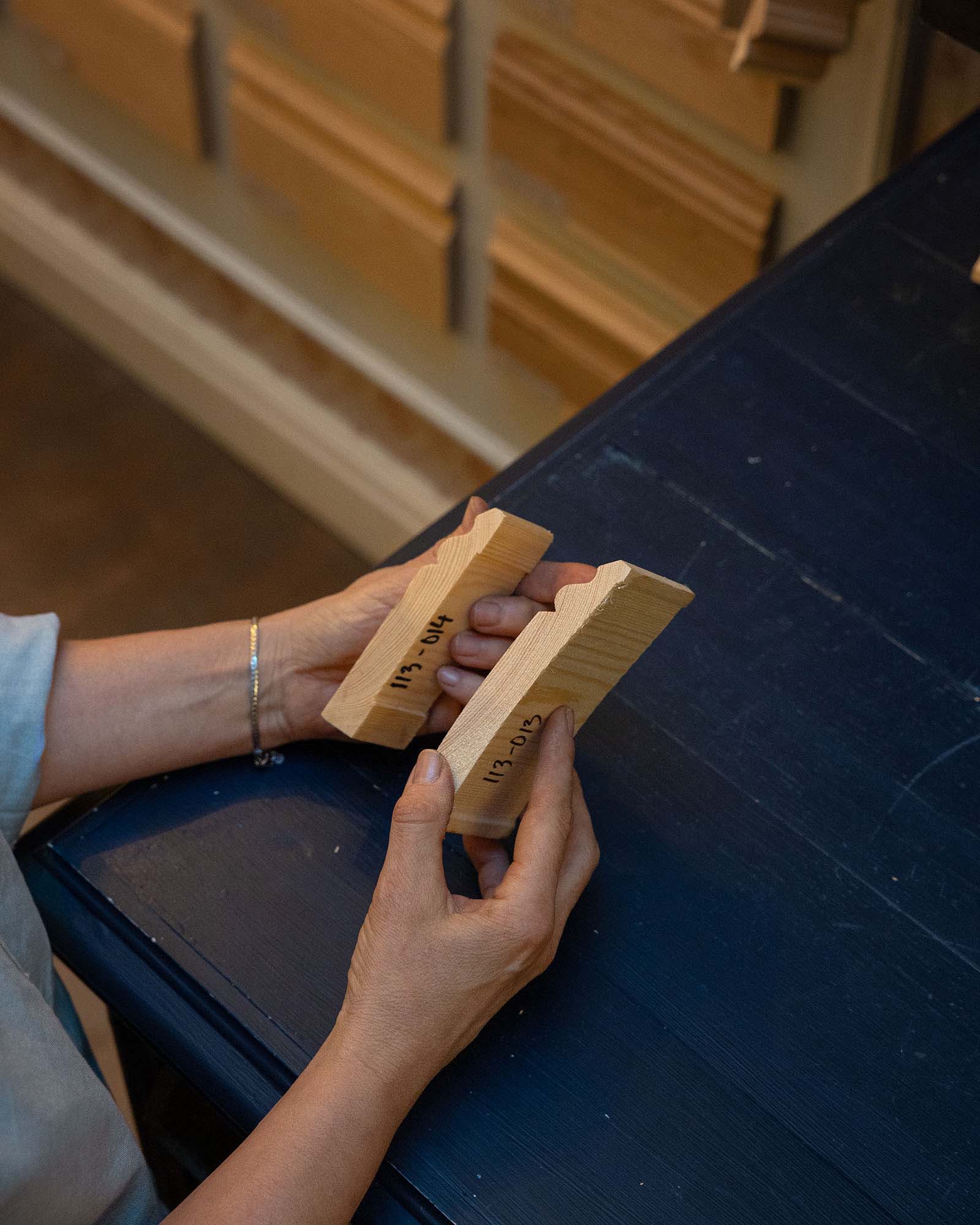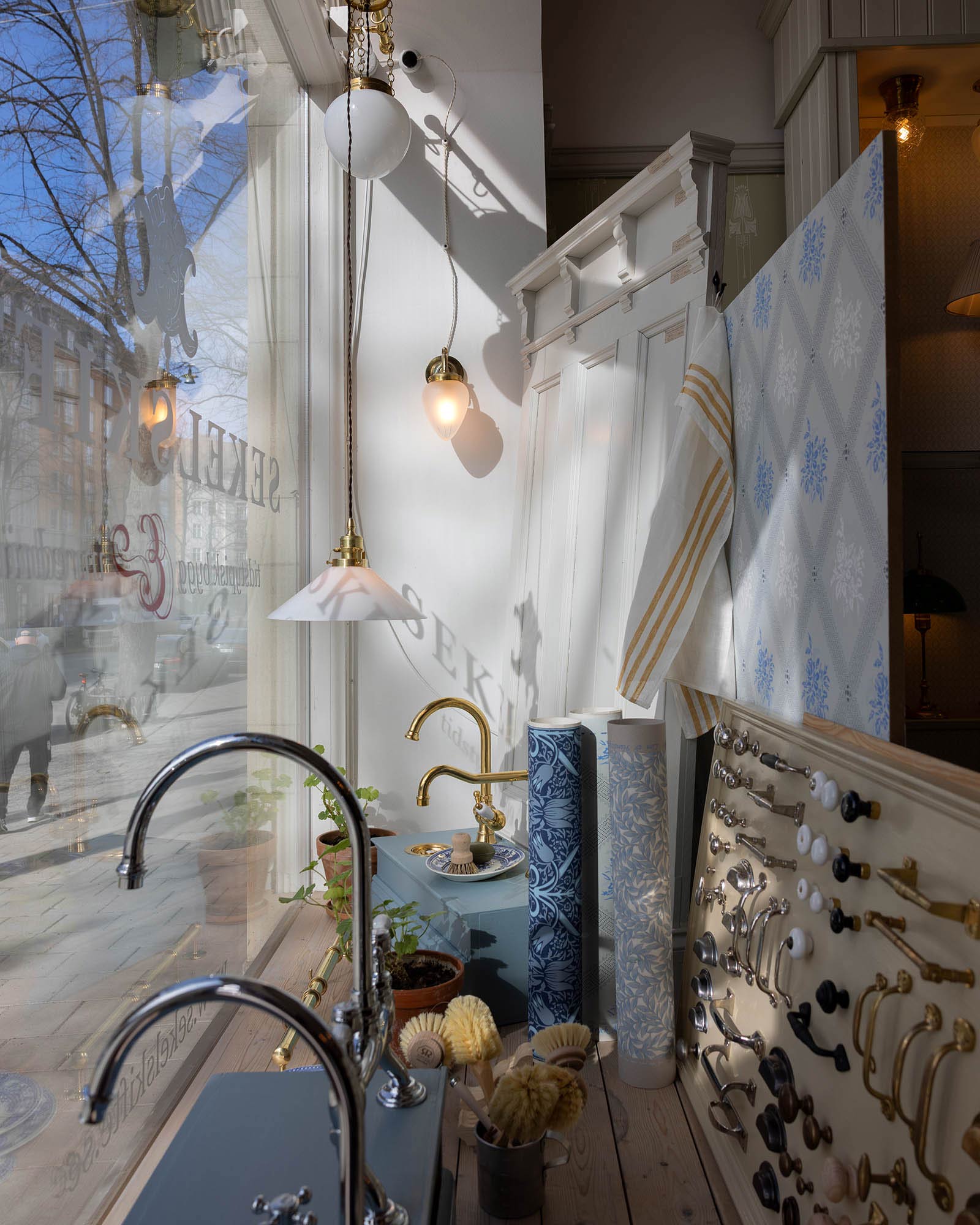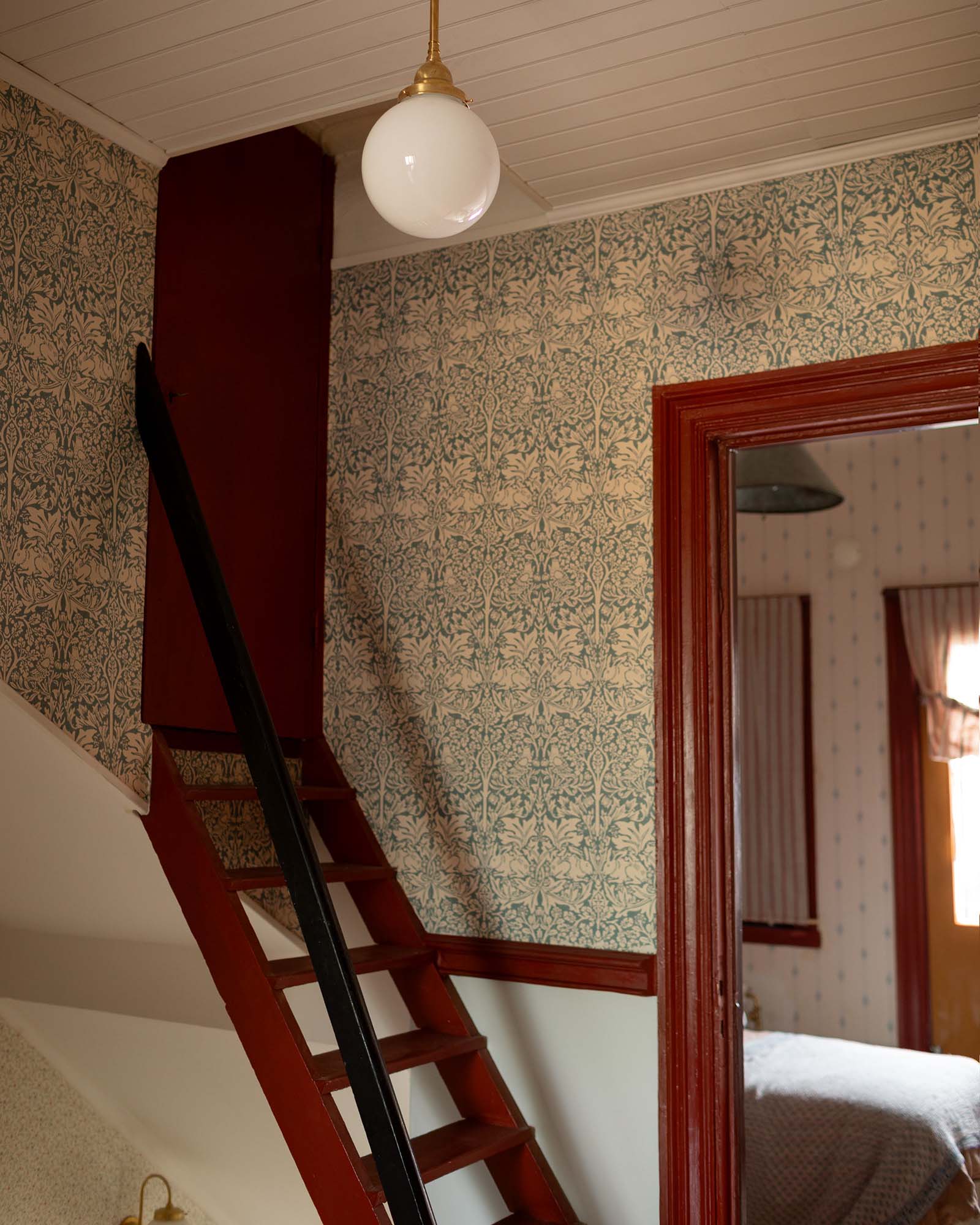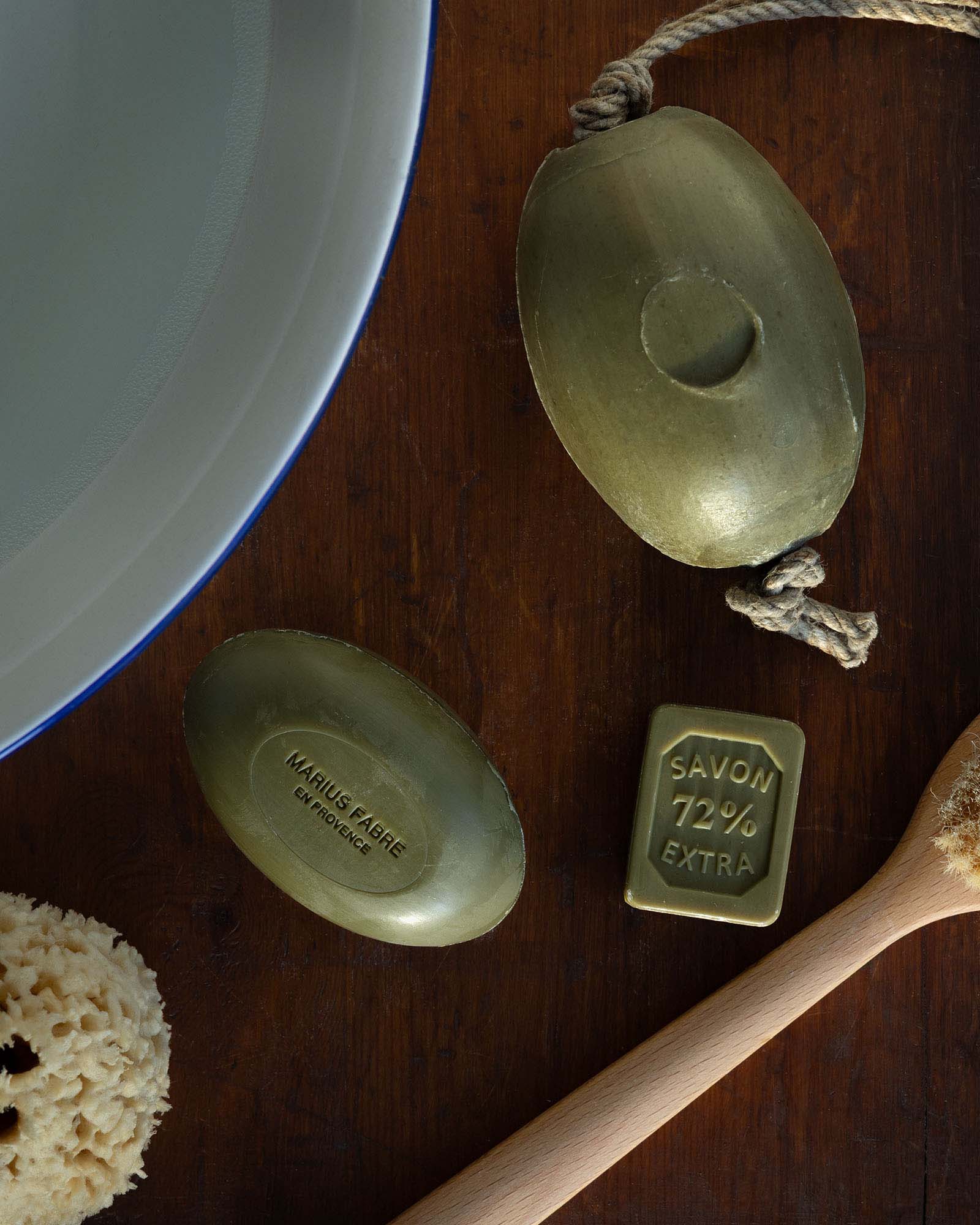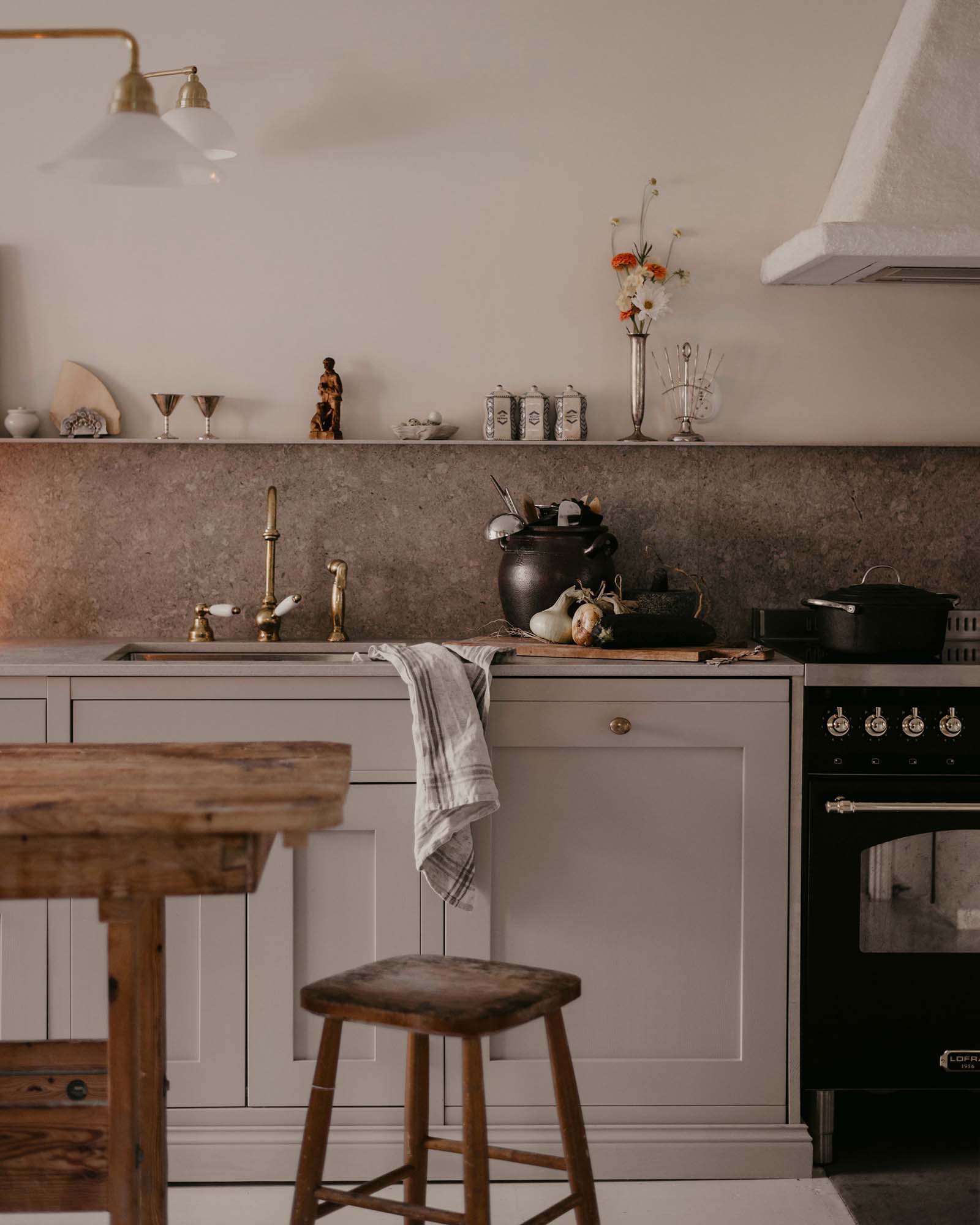During the 1910s, the previously prevailing Art Nouveau style was replaced by a new architectural style. Gradually, the soft design of Art Nouveau, which was by now considered artificial, was replaced by a more “authentic and honest” architectural style based on ancestral Swedish building traditions.
The new aesthetics were inspired by a romantic craze for this genuine and well-known building tradition. Moldings were slightly simpler compared to previous decades. The usual width was around 10 cm (3.94 in.). Equilateral molding with the same profiles on both sides also became popular. In the kitchen and hallways, wood paneling was popular. Floor trim was often relatively high, but with simple profiling. The standard height was 14-17 cm (5.5-6.7 in.) with some simple rounding at the top or a few small grooves on the upper third.
Wooden ceilings were also glazed to imitate medieval carpentry in the true national romantic spirit.





























































































